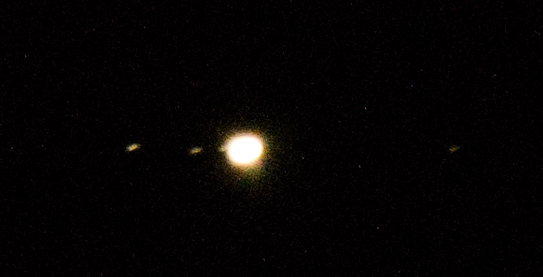The 2021 summer solstice in eastern Idaho occurred within minutes of sunset on June 20, pictured here.
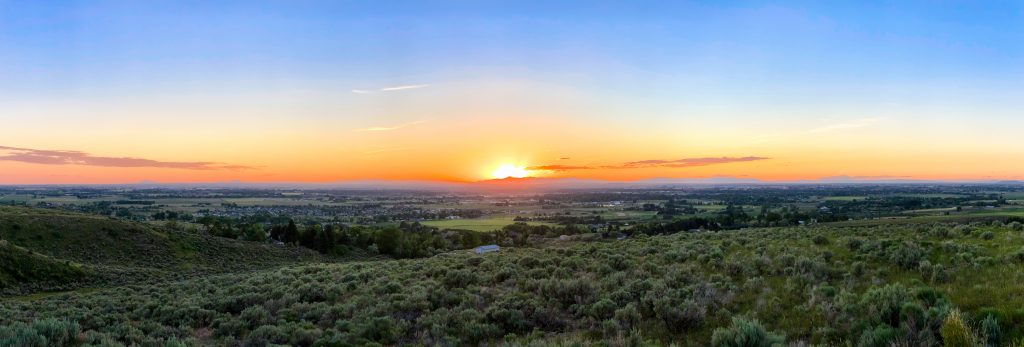
a cautionary autobiography
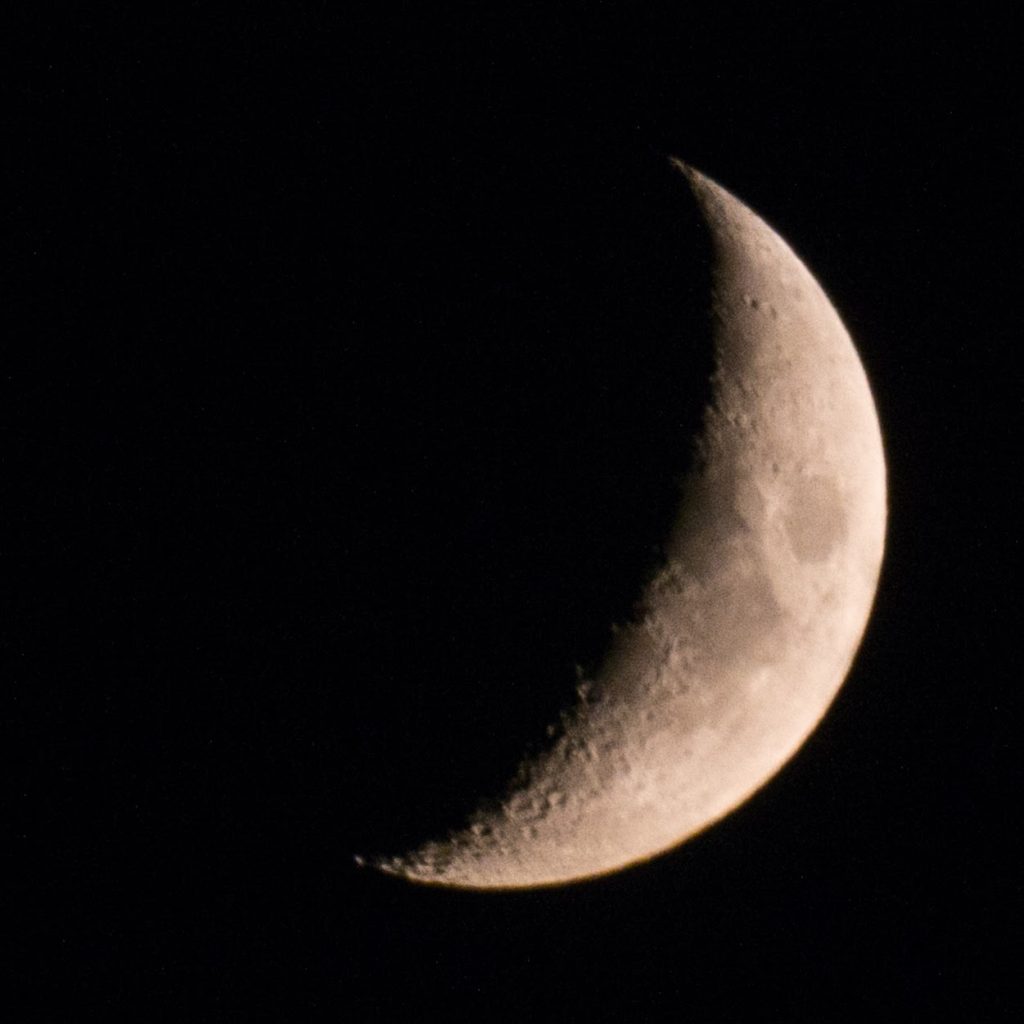
Last year I got a reasonably sharp photo of a full moon with a Nikon D7200 using the $500 Nikkor 18-300mm zoom lens at f/6.3, 1/160 second, ISO 160. This month I pulled out an old Nikon D3100 and a $100 catadioptric 500mm f/8 lens for a bigger challenge: The cheaper lens really falls short in terms of sharpness. Here is the best I could do with each lens (the more recent shot on the right is colored by atmospheric smoke from western wildfires):
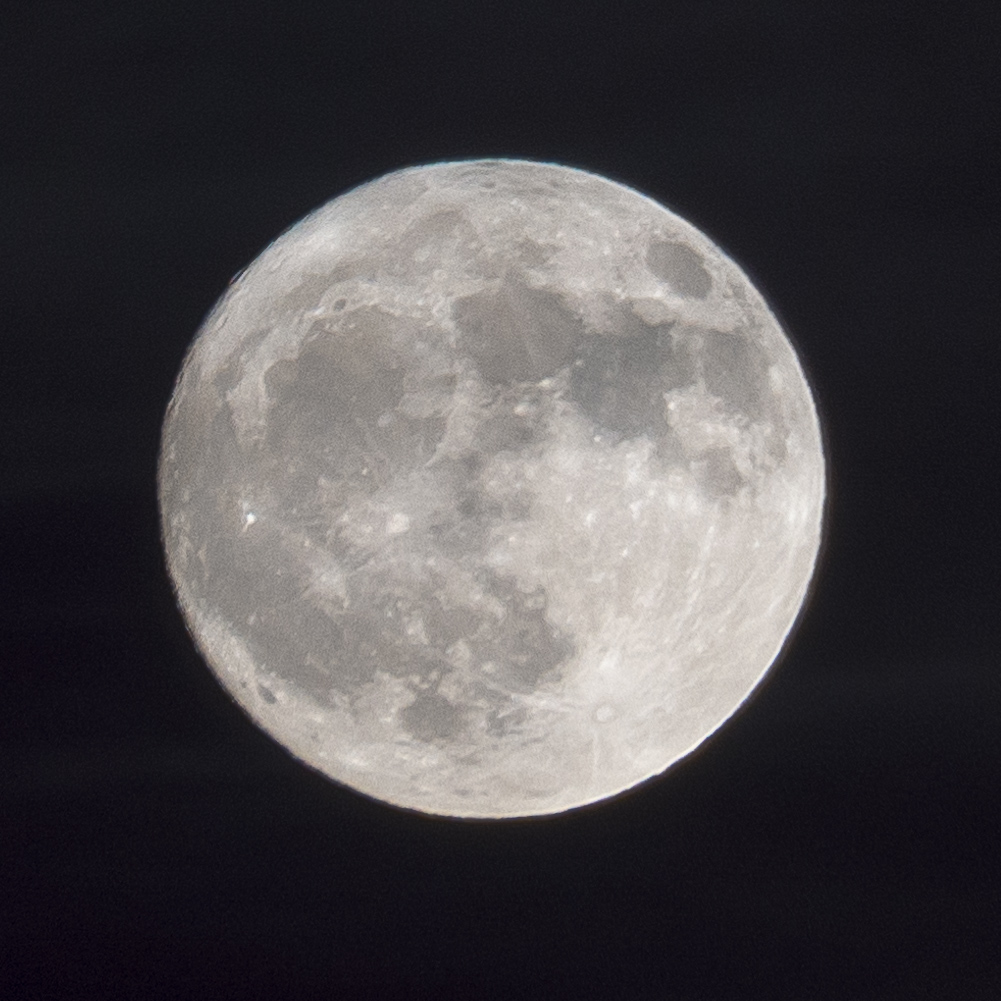
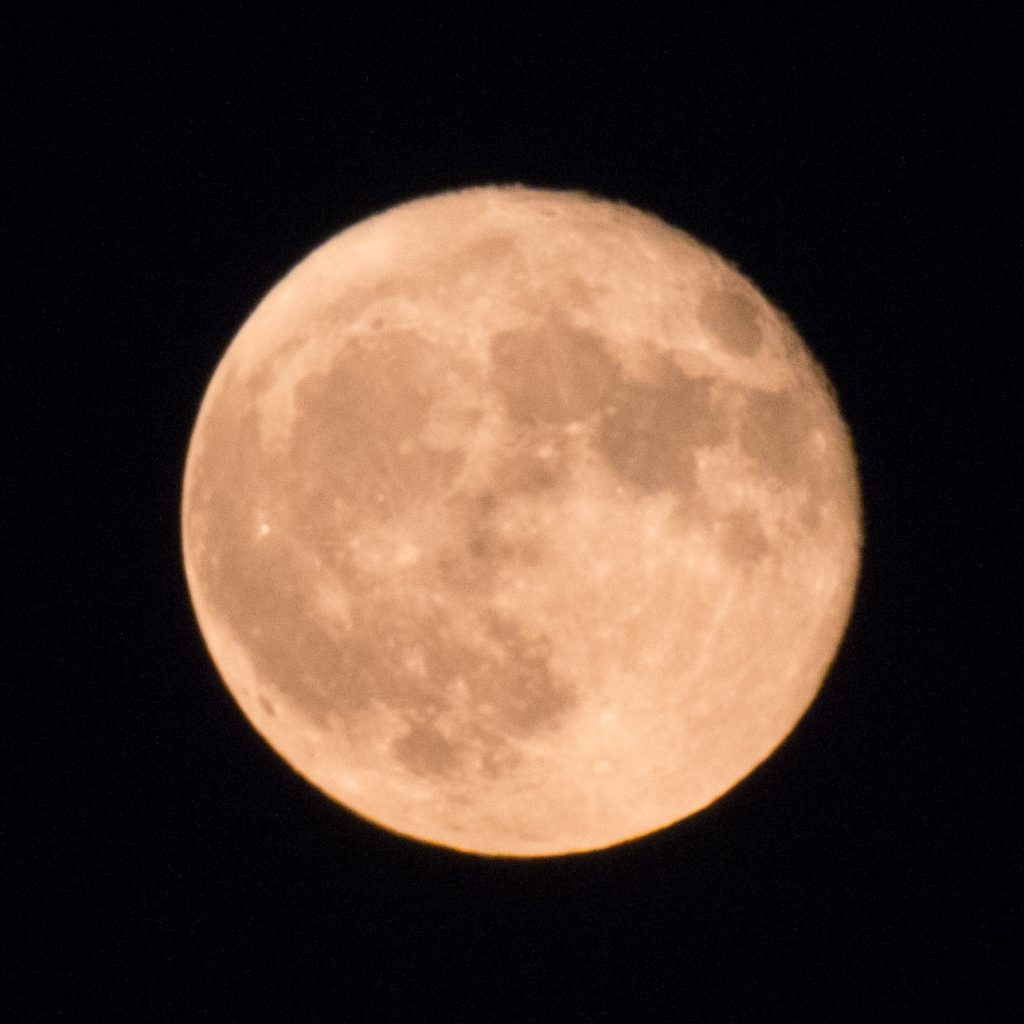
But right now there are some interesting astronomical phenomena: Mars is near its closest approach to earth and is visible to the naked eye. Here the moon passes about one degree below the red plant (top left):
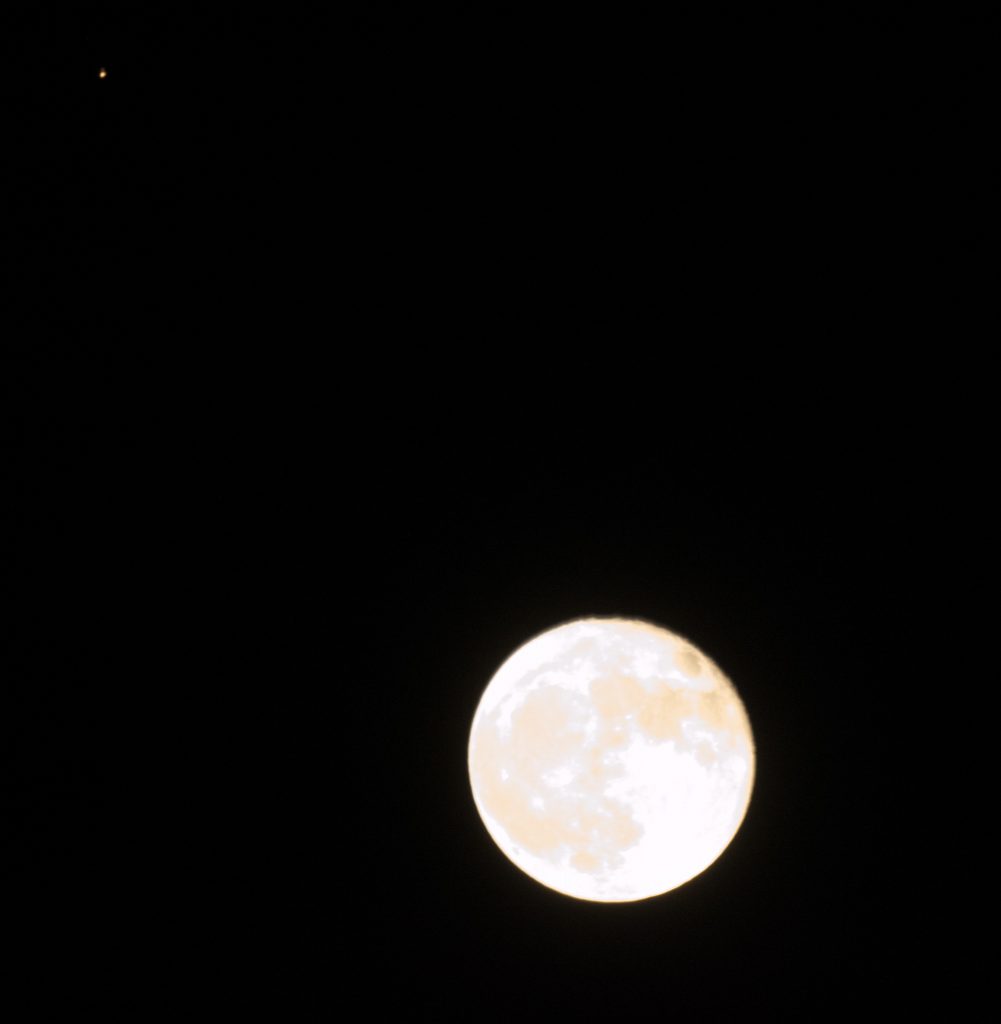
I turned the camera on Jupiter, which is presently close to Saturn and very prominent in the night sky. With the same lens, shooting 1/2 second at ISO 800, I get the following photo showing all four Galilean moons:
